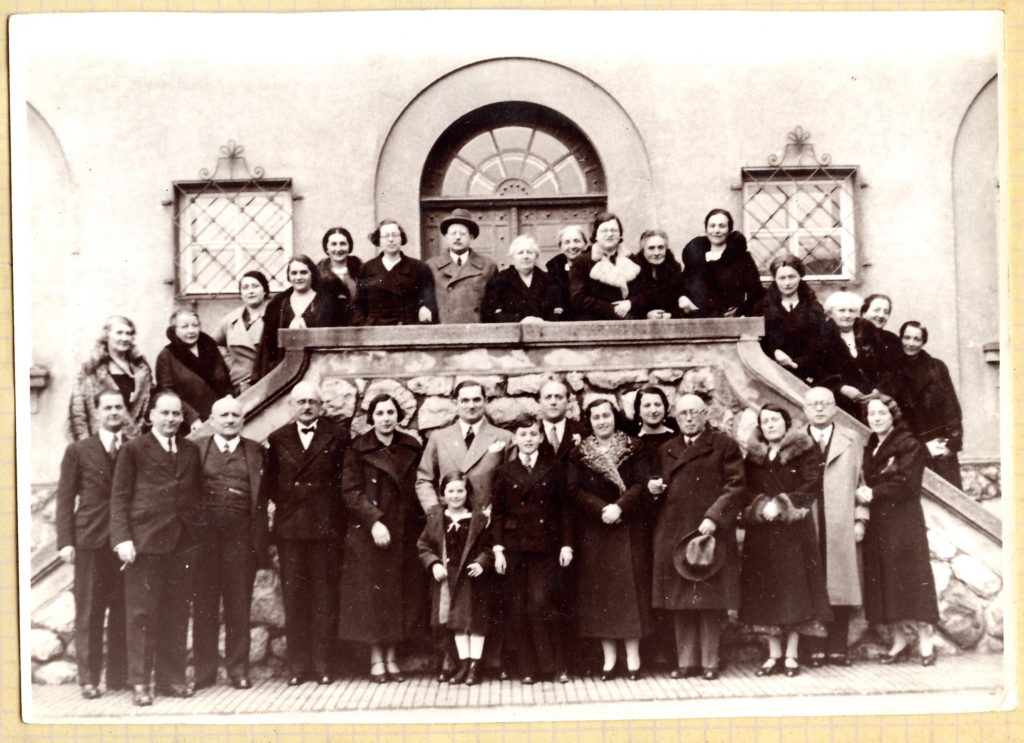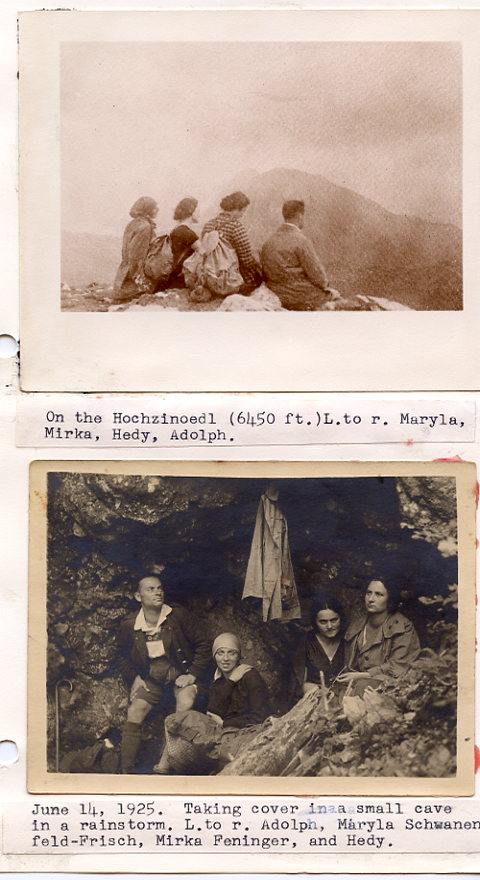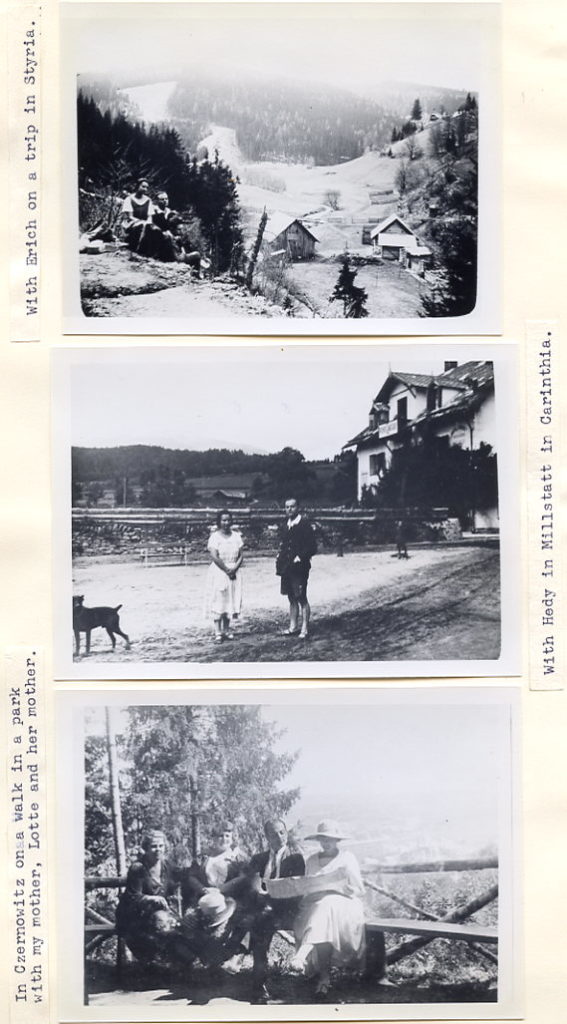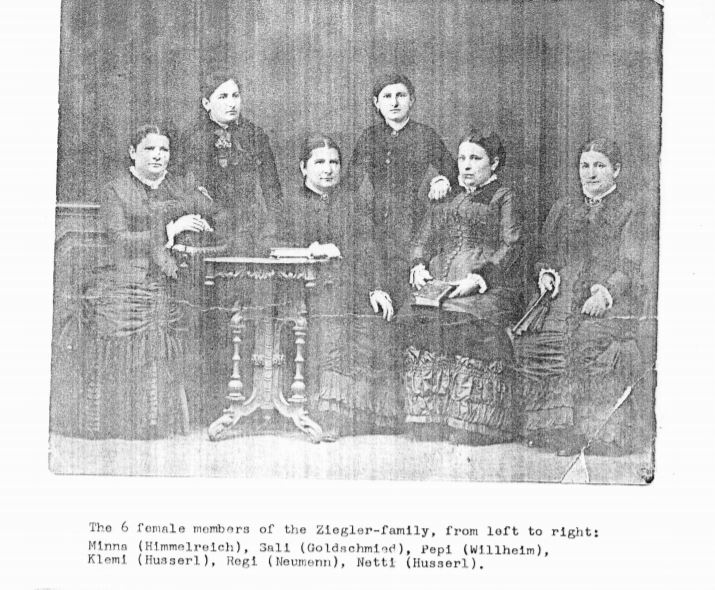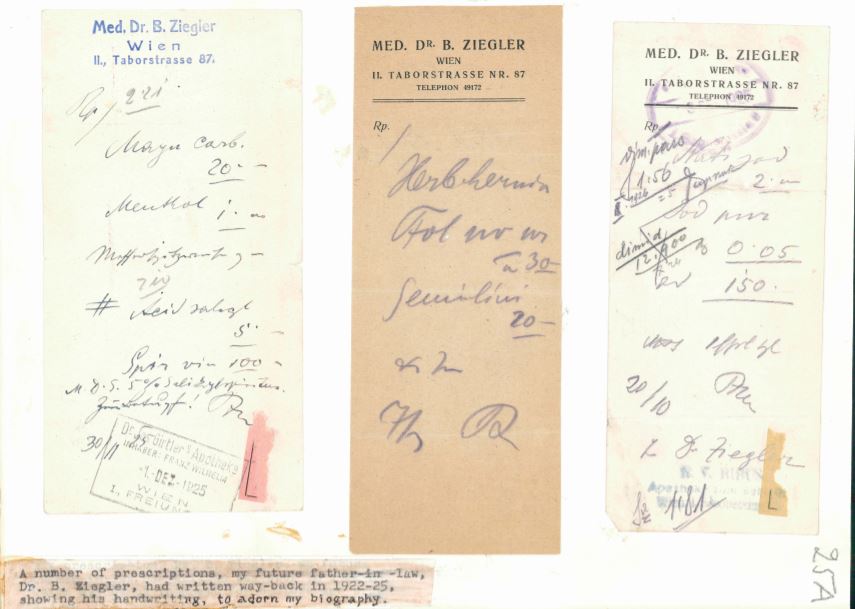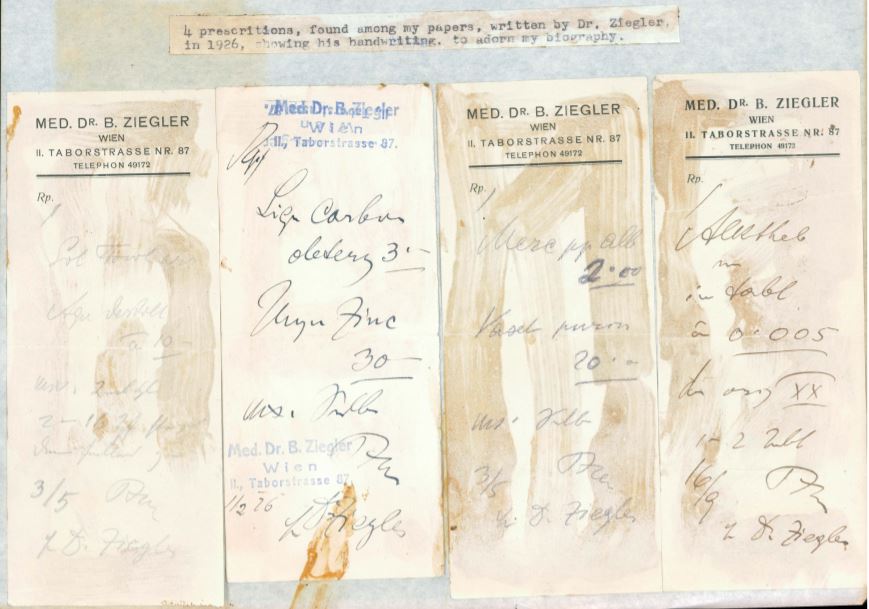1925
Even before my graduation, I started, as a special privilege by professor Schnitzler, to work in the nearby hospital, the Wiedener Krankenhaus, in the department of surgery. He was the brother of the famous playwright Arthur Schnitzler. After my graduation, I started to work in the department of pathology under professor Carl Sternberg, after whom the Sternberg cells in Hodgkins disease are named, and worked there mostly in the afternoon till late in the evening, often till late at night.
In the surgical department all the doctors had to accompany the chief when he arrived in the morning and made the “rounds,” stopping at every bed and examining thoroughly new cases. He was an excellent diagnostician. After the rounds he went to the operating room, where a patient was already lying on the table. Before he started to scrub (wash the hands), he chose one of the doctors to do the anesthesia. In those days there were no special anesthetists; that came much later. Very soon he chose me as anesthetist, and it did not take long that I became his favorite anesthetist.
In those days we used only ether, sometimes very cautiously also chloroform, a few drops only. I liked to do the anesthesia because that gave me the best spot to observe the operation. The bad part of it was that I breathed in a lot of ether, which made me a little drowsy, usually in the afternoon. Often I had to assist in the operation, which usually meant holding the opening in the abdomen apart with special instruments. Every doctor was trained to do operations himself, under the guidance of the first assistant, beginning with smaller operations like cystocele, and gradually advancing to more difficult operations like hernia, hemorrhoids, and appendix operations.
Twice a week I had to work in the emergency room, which was also quite interesting. Often we had to do tooth extractions there. Every doctor was on a list for night service for anesthesias and other emergencies, which meant staying in the hospital for 24 hours. I had my own room and could sleep, but had to get up whenever I was called. I stayed in the surgical department for one year. I did not receive any salary, was well supported by my brother Carl and received regularly checks from him. He also supported Else, who had moved in 1924 to Paris.
My favorite field was pathology, and whenever I could get away, I went to the pathology department to watch Professor Carl Sternberg perform autopsies. This fascinated me. Very often there were other professors there, whose cases were being autopsied. I had my little jars with formaline always ready, anxious to get a little piece of an organ, if it was an especially rare or interesting case. I worked then every afternoon for many hours. I had learned the technique of preparing specimens for microscopic examinations. This was complicated, an elaborate process, putting the specimen first in 70% alcohol, then for a certain time in 96% alcohol, and then in absolute (100%) alcohol, then in paraffin in an incubator, and finally in more concentrated paraffin. There came many more steps, cutting and staining the specimens, which I will not further describe here, till the specimen was ready to be seen under the microscope. I gradually developed a mastery in that kind of work. Once a week we had to go with our preparations into professor Sternberg’s office, and he examined each of the slides, commenting on them and making his diagnosis. It was fascinating work. Sometimes he was elated about an especially beautiful slide.
Lunch I had in the hospital, but for the evening I made the long trip to Hedy’s home, usually in time for a good dinner. I stayed till very late there, and it was quite late when I arrived at home in my room in the Belvederegasse.
In that year, 1925, we often went on trips, on some with colleagues of Hedy’s from the chemistry department, Maryla Schwanenfeld and another lovely girl, Mirka Feninger, and also Erich. On one of the excursions we went to the Gesause, and a picture shows us sitting on top of a very high mountain, the Hochzinödl, 6,450 feet high, in another picture standing on a bridge over a very high waterfall. I had to walk or climb down a few hundred feet to take that shot. Maryla got married later and her name is now Prisch. We remained very good friends.
In that same year Hedy and I went on a 3-weeks vacation to Millstatt on the Millstatter Lake in Carinthia, where friends of ours, Mr. and Mrs. Welzl, spent their vacation too. It was a lovely place. Mr. Welzl went with us on a bigger trip, by train to Mallnitz and from there climbing up to the Tauernpass (7350 feet) and then down to Boeckstein and Badgastein. The way back to Millstatt we took by railroad through the very long Tauern tunnel. It was a very pleasant vacation.
In fall of that year, Eedy’s family had a very rare visitor from Paris, Otto Feingold, the oldest brother of my mother-in-law. I have a picture of a family gathering, showing the three brothers Otto, Josef, and Heini Peingold, and two sisters, Betty Reisberg and Hedy’s mother Gina Ziegler, Dr. Reisberg, Heay, Lisa, Erich, and me, Elsa Feingold, Josef Feingold’s wife, and their two sons, John and Erich Forster, still little boys. Only the third sister, Susi, was not present. It was a nice reunion.
At Christmas and till New Year, I had a very difficult job. Professor Carl Sternberg had an assistant, Dr. Homma, and a very efficient female laboratory worker. Both of them went on vacation at the same time and professor Sternberg was angry and helpless. He approached me and asked me whether I would help him out, and I had to say yes. It meant doing all the bacteriologic work, for which I was not prepared at all, blood cultures, Vidal reactions for typhoid fever, examination of pus and culture, urine cultures, etc. I had good books and could look many things up, but still, it was an extremely difficult job, and I tried very hard to do my best. Professor Sternberg was very satisfied, but I was happy, when the New Year was over, and the two vacationers were back on their jobs. I learnt a lot, doing that kind of work. This was the laboratory, which did all the bacteriologic laboratory examinations for the whole hospital, which had about 400 beds. I did not do any histologic work from autopsies. That had to wait till the two vacationers had come back.
Later on, in 1926, professor Sternberg autopsied a very interesting case, a dwarf, about 22 years old, and he was quite excited about this case, since he had published once a paper about such a case, which he called hypoplastic dwarfism, and he asked me to write a paper about this new case. I got all the necessary data, the measurements and parts of all the organs, including the endocrine glands, which had to be measured and weighed, also X-ray pictures of the bones. I had to visit the family of that young man and get all the informations about his mental capacities, his school work, etc. I had a lot of work with that. I had to go to the library almost daily and study publications about dwarfism.
The best known type of dwarfism was the Paltauf dwarf, and the best and most extensive description was a publication by professor Erdheim about the chondrodystrophic dwarf. It was an enormous field and I did not advance as fast as I would have liked. I hardly scratched the surface of that case, when professor Sternberg had another interesting case and asked me to write a paper about that case too. It was a case of eunuchoidism, and again I got the endocrine glands and parts of other organs. It was really too much for me, since I did not want to become a pathologist, but rather a general practitioner. Nevertheless, I published the case of hypoplastic dwarf ism in the Pathologic Society with demonstration of slides on the screen, mentioning that it was Carl Sternberg who first described such a case, and that there was only one more such case in the literature, described in Japan. But I could not continue working on that case, so that it could be published nor could I continue working on the case of eunuchoidism. One day, about two years later, I asked professor Sternberg to publish these cases himself. He understood that I had not enough time to do it, since I intended to go into private practice. He then published these two cases and mentioned that I had started the work.
My photo album shows that in 1926, Hedy and I went on a ski tour with Olly Goldschmied, a cousin of Hedy’s, and her two daughters, Annie and Edith and a young governess, which they had for a long time. In that year, Hedy had her first job as a chemist in the sugar factory in Trnava in Tchechoslovakia, where her cousin, Ernst Goldschmied, was Generaldirektor. It was a temporary job, lasting as long as the sugar campagne lasted, that means a few months. During that time, I visited her a few times on weekends, stayed there 2 or 3 days, and these people were very nice towards me. The next following year she had the same job again.
My summer vacation I spent in that year 1926 again in Czernowitz. I have to correct what I had said before, that the last time I saw Czernowitz was in 1924. That was not correct. It was in 1926. Carl had then a car and we made a few nice tours into Romania. The farthest we got was Jasy. We also went on hunting trips with a big group of people and one picture in my album shows all of us with the rifles and about 5 or 6 hares lying in front of us. These tours usually ended with a fine meal, served at the home of the land owner. I don’t remember any details about the rest of the year. I continued working at the department of surgery till the end of 1925 and pathology till the end of July 1926.
Erich had already started to study medicine and as far as I remember, he graduated in the year 1930. When he came to pathology, I gave him many cassettes with all my slides, which helped him a lot. But, unfortunately, he did not give them back to me, but gave them to some of his colleagues, with the understanding that they would give them back to him. But he never got them back, and that is how I lost all my beautiful slides, my whole collection. I could not be angry at him, since he was such a nice fellow whom I really loved, but I was quite unhappy about it – for a while.
Here is a complete list of my hospital work in the different departments: Surgery under professor Julius Schnitzler from January 20th, 1925, till December 27th, 1925, and then again from November 1st, 1928, till December 31st, 1928. Pathology under professor Carl Sternberg from April 2nd, 1925, till March 12th, 1926. I continued working there unofficially till the end of June 1929. That means that I went there almost daily to autopsies and did then histologic work in the afternoon. Internal medicine under professor Richard Bauer from March 20th, 1926, till April 15th, 1927, and then again under professor Maximilian Sternberg from June 16th, 1927 till October 31st, 1927, and then again from January 1st, 1929, till June 9th, 1929. Gynecology and obstetrics under professor Josef Halban from April 15th, 1927, till June 15th, 1927, and then again from March 1st, 1928, till June 30th, 1928. Dermatology under professor Paul Rusch from November 27th, 1927, till February 29th, 1928.
All together I had 5 years of hospital work. There were some interruptions, when I went on vacation. These were usually winter vacations, and for one vacation I went with Hedy to the Adriatic Sea to Circvenica for about three weeks, a beautiful sea resort in Yugoslavia. Except for the mosquitoes, it was a most pleasurable vacation. Since I spoke fluently Yugoslavian, I had no difficulties to communicate with the people there. The beach there was simply wonderful. We made also boat trips along the coast and to a big island Krk, which once, when it belonged to Austria, had the Italian name Veglia. We visited there one of the numerous grottos. We went also once to Sušak and tried to get permission to go over the Italian border to Fiume, but were not successful. We would have liked to buy some Italian stuff there. After the Second World War, Fiume was given to Yugoslavia.
